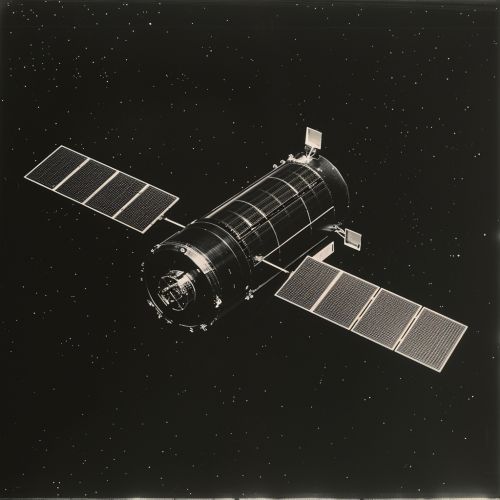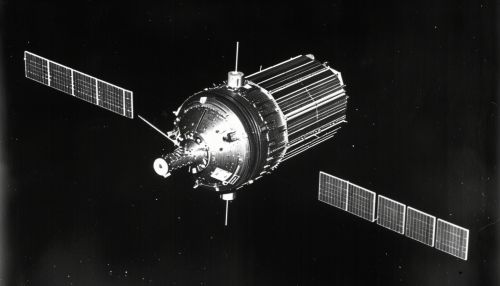TIROS-1: Difference between revisions
No edit summary |
No edit summary |
||
| Line 3: | Line 3: | ||
TIROS-1, or Television Infrared Observation Satellite, was the first successful low-Earth orbital [[Weather satellite|weather satellite]], and the first of a series of television infrared observational satellites launched by the United States in the 1960s. Its main mission was to test the feasibility of obtaining and using television images of Earth's cloud cover, from space, for meteorological purposes. | TIROS-1, or Television Infrared Observation Satellite, was the first successful low-Earth orbital [[Weather satellite|weather satellite]], and the first of a series of television infrared observational satellites launched by the United States in the 1960s. Its main mission was to test the feasibility of obtaining and using television images of Earth's cloud cover, from space, for meteorological purposes. | ||
[[Image:Detail-77707.jpg|thumb|center|A black and white photo of a satellite, cylindrical in shape with two solar panels extended on either side.]] | [[Image:Detail-77707.jpg|thumb|center|A black and white photo of a satellite, cylindrical in shape with two solar panels extended on either side.|class=only_on_mobile]] | ||
[[Image:Detail-77708.jpg|thumb|center|A black and white photo of a satellite, cylindrical in shape with two solar panels extended on either side.|class=only_on_desktop]] | |||
== Development and Design == | == Development and Design == | ||
Latest revision as of 07:20, 7 May 2024
Introduction
TIROS-1, or Television Infrared Observation Satellite, was the first successful low-Earth orbital weather satellite, and the first of a series of television infrared observational satellites launched by the United States in the 1960s. Its main mission was to test the feasibility of obtaining and using television images of Earth's cloud cover, from space, for meteorological purposes.


Development and Design
The development of TIROS-1 was initiated by the U.S. Army Signal Research and Development Laboratory (SRDL) and the U.S. Army Signal Corps Engineering Laboratories in Fort Monmouth, New Jersey. The project was then transferred to the newly created National Aeronautics and Space Administration (NASA) in 1958. The design of the satellite was a collaborative effort between NASA, the U.S. Navy, and the Radio Corporation of America (RCA).
TIROS-1 was designed as a 270-kilogram, 1.07-meter diameter, 0.56-meter high, barrel-shaped satellite. It was equipped with two independent television camera subsystems for taking images of Earth's cloud cover. The cameras were enclosed in a temperature-controlled, hermetically sealed cylindrical housing. The satellite was also equipped with two sets of solar panels that extended from its sides, providing power to its systems.
Launch and Mission
TIROS-1 was launched on April 1, 1960, from Cape Canaveral, Florida, using a Thor-Able rocket. The satellite was placed into a polar orbit, allowing it to scan the entire Earth's surface. The mission was considered a success, as TIROS-1 transmitted thousands of images back to Earth during its 78-day operational lifespan.
The primary objective of the TIROS-1 mission was to test the experimental television techniques designed to develop a worldwide meteorological satellite information system. The secondary objective was to provide experience in the design, development, launch, and operation of a complex space-based system.
Legacy and Impact
The success of TIROS-1 marked a significant milestone in the use of artificial satellites for weather observation and forecasting. The images transmitted by TIROS-1 provided meteorologists with their first views of weather systems from a space-based perspective. This new perspective led to significant advancements in meteorology, particularly in the area of weather prediction and forecasting.
TIROS-1 paved the way for the development of more advanced weather satellites. The TIROS series continued with nine more satellites, each improving upon the last, culminating with TIROS-10, launched in 1965. The TIROS program was succeeded by the Nimbus program, which further advanced the technology and capabilities of weather satellites.
